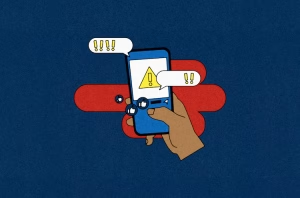In the evolving landscape of social media and online platforms, the concept of “shadow banning” has emerged as both a controversial practice and a misunderstood phenomenon. This term, often whispered in online circles and forums, prompts questions about the limits of free expression and the power dynamics between users and platforms. As individuals increasingly rely on social media for communication, understanding shadow banning and its broader implications becomes essential. This article delves into the core of what shadow banning means, its effects on users, and the larger impact on digital discourse.
Unpacking the Concept of Shadow Banning Online
Shadow banning, often described as a covert method of censorship, refers to the practice where a user’s content is subtly suppressed without their knowledge. Unlike outright bans where users are notified of violations, shadow banning allows individuals to continue posting as usual, albeit with significantly reduced visibility to others. This tactic is deployed by platforms seeking to minimize the spread of content deemed inappropriate or harmful, without triggering backlash that might accompany explicit bans or removals.
The concept of shadow banning is shrouded in ambiguity, partly due to the lack of transparency from platforms about their moderation algorithms and guidelines. While some argue that shadow banning is a myth, perpetuated by users unable to grasp the reasons behind their declining engagement, others see it as a deliberate strategy employed by platforms to maintain a particular type of online environment. The absence of clear communication from social media companies adds to the confusion, leading to accusations of bias and censorship from affected users.
At its core, shadow banning raises fundamental questions about the balance between free speech and the responsibility of platforms to regulate harmful content. On one hand, it serves as a tool for platforms to manage misinformation, harassment, and other forms of digital misconduct. On the other, it poses ethical concerns about who gets to decide what content is suppressed and the criteria used for such decisions. This ambiguity fuels debates about digital rights and the roles of tech companies in shaping public discourse.
Exploring the Effects and Implications for Users
For individual users, the experience of being shadow banned can be both frustrating and isolating. The lack of explicit communication or notification means users often realize their predicament only after noticing a sharp decline in engagement or interactions on their posts. This can be particularly detrimental for content creators, influencers, and businesses that rely on social media visibility for their livelihood. Shadow bans can hinder their ability to reach audiences, affecting their income and professional growth.
Moreover, shadow banning can have a chilling effect on freedom of expression. Users, uncertain about what behaviors or content might trigger a shadow ban, may self-censor to avoid potential repercussions. This self-regulation can stifle creativity and diversity of thought, as individuals might shy away from discussing controversial yet important topics. The fear of being rendered invisible online can deter users from engaging in meaningful conversations or challenging prevailing narratives.
The implications of shadow banning extend beyond individual users, influencing the broader ecosystem of online interaction. By selectively restricting content, platforms can inadvertently skew public perception and debate. This selective visibility can create echo chambers, where only certain voices and perspectives are amplified, potentially reinforcing existing biases and divisions. As shadow banning becomes a topic of public discourse, it underscores the need for transparency and accountability in the digital space, prompting discussions on how to balance regulation with open dialogue.
As digital interactions continue to shape modern discourse, understanding practices like shadow banning becomes increasingly vital. While intended as a tool for maintaining safe and supportive online environments, shadow banning carries significant implications for free expression and the dynamics of online communities. Navigating these challenges requires ongoing dialogue among users, platforms, and policymakers to ensure that the digital space remains inclusive and open, allowing for a diversity of voices and ideas to flourish. The future of online communication hinges on finding this delicate balance, ensuring both the protection of users and the preservation of fundamental freedoms.



